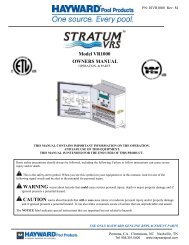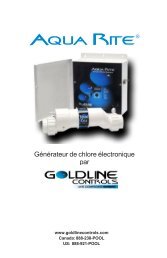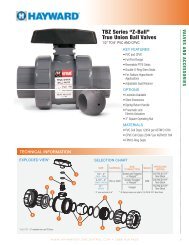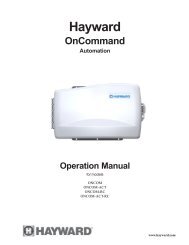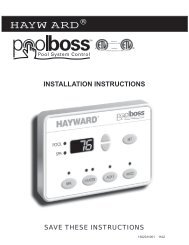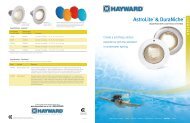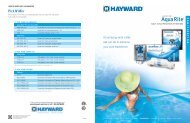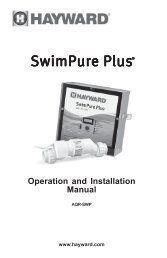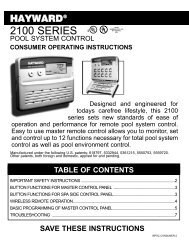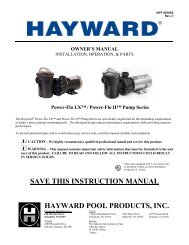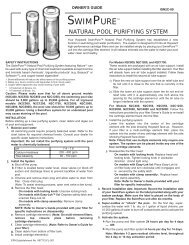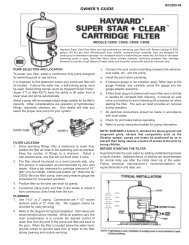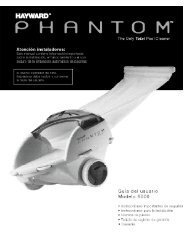Max Flo II™ Pump Series - Owner's Manual - Pool Center
Max Flo II™ Pump Series - Owner's Manual - Pool Center
Max Flo II™ Pump Series - Owner's Manual - Pool Center
Create successful ePaper yourself
Turn your PDF publications into a flip-book with our unique Google optimized e-Paper software.
<strong>Max</strong>-<strong>Flo</strong> II <strong>Series</strong> __________________ ___________________________ _ Page 14 of 16<br />
Low <strong>Flo</strong>w – Generally, Check For: (cont’d.)<br />
2. Undersized pool piping.<br />
Solution: Correct piping size.<br />
3. Plugged or restricted discharge line of filter, valve partially closed (high gauge reading).<br />
Solution: Sand filters – backwash as per manufacturer’s instructions; D.E. filters – backwash as per manufacturer’s<br />
instructions; Cartridge filters – clean or replace cartridge.<br />
4. Air leak in suction (bubbles issuing from return fittings).<br />
Solution: Re-tighten using Teflon tape.<br />
5. Plugged, restricted, or damaged impeller.<br />
Solution: Replace including new seal assembly.<br />
Noisy <strong>Pump</strong> – Check For:<br />
1. Air leak in suction piping, cavitations caused by restricted or undersized suction line or leak at any joint, low water level<br />
in pool, and unrestricted discharge return lines.<br />
Solution: Correct suction condition or throttle return lines, if practical. Holding hand over return fitting will sometimes<br />
prove this point or putting in a smaller eyeball fitting.<br />
2. Vibration due to improper mounting, etc.<br />
Solution: Mount the pump on a level surface and secure the pump to the equipment pad.<br />
3. Foreign matter in pump housing. Loose stones/debris hitting impeller could be cause.<br />
Solution: Clean the pump housing.<br />
4. Motor bearings noisy from normal wear, rust, overheating, or concentration of chemicals causing seal damage which will<br />
allow chlorinated water to seep into bearings wiping out the grease causing bearing to whine.<br />
Solution: All seal leaks should be replaced at once.<br />
© Hayward <strong>Pool</strong> Products, 2005<br />
All rights reserved.<br />
www.haywardpool.com<br />
USE ONLY HAYWARD GENUINE REPLACEMENT PARTS



